
Wireless telegraphy or radiotelegraphy is transmission of telegraph signals by radio waves. Before about 1910, the term wireless telegraphy was also used for other experimental technologies for transmitting telegraph signals without wires. In radiotelegraphy, information is transmitted by pulses of radio waves of two different lengths called "dots" and "dashes", which spell out text messages, usually in Morse code. In a manual system, the sending operator taps on a switch called a telegraph key which turns the transmitter on and off, producing the pulses of radio waves. At the receiver the pulses are audible in the receiver's speaker as beeps, which are translated back to text by an operator who knows Morse code.

David Sarnoff was an American businessman and pioneer of American radio and television. Throughout most of his career he led the Radio Corporation of America (RCA) in various capacities from shortly after its founding in 1919 until his retirement in 1970.

The Royal Flying Corps (RFC) was the air arm of the British Army before and during the First World War until it merged with the Royal Naval Air Service on 1 April 1918 to form the Royal Air Force. During the early part of the war, the RFC supported the British Army by artillery co-operation and photographic reconnaissance. This work gradually led RFC pilots into aerial battles with German pilots and later in the war included the strafing of enemy infantry and emplacements, the bombing of German military airfields and later the strategic bombing of German industrial and transport facilities.

Scott Air Force Base is a United States Air Force base in St. Clair County, Illinois, near Belleville and O'Fallon, 17 miles east-southeast of downtown St. Louis. Scott Field was one of thirty-two Air Service training camps established after the United States entered World War I in April 1917. It is headquarters of Air Mobility Command (AMC), and is also the headquarters of the U.S. Transportation Command, a Unified Combatant Command that coordinates transportation across all the services.
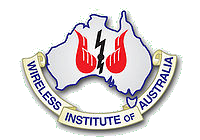
The Wireless Institute of Australia (WIA) was formed in 1910, and is the first and oldest national amateur radio society in the world. It represents the amateur radio operators of Australia as the AR "peak body" in dealings with the Australian Communications and Media Authority (ACMA), the authority under the government of Australia that administers communications within and external to Australia. The WIA publishes a bi-monthly journal for its membership called Amateur Radio. The organisation is the national society representing Australia in the International Amateur Radio Union.

The United States Naval Reserve , better known as the WAVES, was the women's branch of the United States Naval Reserve during World War II. It was established on July 21, 1942 by the U.S. Congress and signed into law by President Franklin D. Roosevelt on July 30. This authorized the U.S. Navy to accept women into the Naval Reserve as commissioned officers and at the enlisted level, effective for the duration of the war plus six months. The purpose of the law was to release officers and men for sea duty and replace them with women in shore establishments. Mildred H. McAfee, on leave as president of Wellesley College, became the first director of the WAVES. She was commissioned a lieutenant commander on August 3, 1942, and later promoted to commander and then to captain.
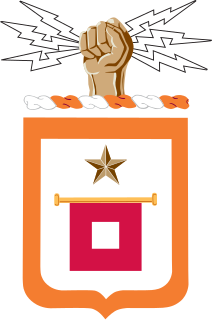
The United States Army Signal Corps (USASC) is a branch of the United States Army that creates and manages communications and information systems for the command and control of combined arms forces. It was established in 1860, the brainchild of Major Albert J. Myer, and had an important role in the American Civil War. Over its history, it had the initial responsibility for portfolios and new technologies that were eventually transferred to other U.S. government entities. Such responsibilities included military intelligence, weather forecasting, and aviation.
Shortwave bands are frequency allocations for use within the shortwave radio spectrum. They are the primary medium for applications such as maritime communications, international broadcasting and worldwide amateur radio activity because they take advantage of ionospheric skip propagation to send data around the world. The bands are conventionally stated in wavelength, measured in metres. Propagation behavior on the shortwave bands depends on the time of day, the season and the level of solar activity.

Charles Emory Apgar was an American business executive and amateur radio operator. He is known for making early recordings of radio transmissions at the start of World War I. The recordings that he made of a wireless telegraphy station owned by a German Empire-based company operating from the United States were used to expose an espionage ring. They provided evidence of clandestine messages being sent in violation of a prohibition intended to maintain United States neutrality. This proof of illicit operation led to the government seizing control of the facility to stop the activity. Apgar's efforts received extensive coverage in newspapers and technical science magazines at the time. His contributions were praised by government investigators. Publications continued to remark on his work many years later.
The history of amateur radio, dates from the dawn of radio communications, with published instructions for building simple wireless sets appearing at the beginning of the twentieth century. Throughout its history, amateur radio enthusiasts have made significant contributions to science, engineering, industry, and social services. Research by amateur radio operators has founded new industries, built economies, empowered nations, and saved lives in times of emergency.
Arthur Moore was a Welsh wireless operator who heard a distress signal from RMS Titanic before news of the disaster arrived in the UK. Following the notoriety of this feat he went on to a successful career in sales, management and development of early radio.
Electronics World is a technical magazine in electronics and RF engineering aimed at professional design engineers. It is produced monthly in print and digital formats.

Hello Girls was the colloquial name for American female switchboard operators in World War I, formally known as the Signal Corps Female Telephone Operators Unit. During World War I, these switchboard operators were sworn into the U.S. Army Signal Corps.

Florence Violet McKenzie OBE, affectionately known as "Mrs Mac", was Australia's first female electrical engineer, founder of the Women's Emergency Signalling Corps (WESC) and lifelong promoter for technical education for women. She campaigned successfully to have some of her female trainees accepted into the all-male Navy, thereby originating the Women's Royal Australian Naval Service (WRANS). Some 12,000 servicemen passed through her signal instruction school in Sydney, acquiring skill in Morse code and visual signalling.

Although they often faced obstacles and policy limitations, beginning in the early 1900s a few women were able to participate in the pioneering development of radio communication.
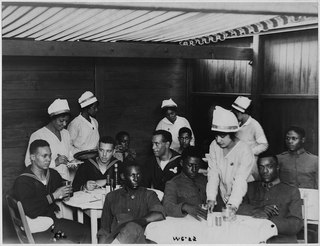
The National League for Women's Service (NLWS) was a United States civilian volunteer organisation formed in January 1917 to provide stateside war services such as feeding, caring for and transporting soldiers, veterans and war workers and was described as "America's largest and most remarkable war emergency organization."
Edna Owen (1859–1936) was an American suffragist probably best known for her contributions to the training of female wireless operators in the US during World War I. She was the director of the wireless training course run by the National League for Women's Service at Hunter College, New York; trained female wireless operators at the YWCA in New York City; and was a founder and chairman of the Women's Radio Corps.
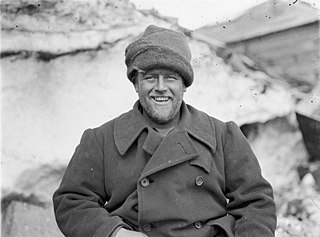
Walter Henry Hannam (1885–1965) was an Australian wireless experimenter, a founding member of the Wireless Institute of Australia, wireless operator and mechanic on the Australasian Antarctic Expedition, a member of the ANZAC Wireless Company in World War I, and tireless promoter of amateur radio in the 1920s.

The Marconi Wireless Telegraph Company of America was incorporated in 1899. It was established as a subsidiary of the British Marconi Company and held the U.S. and Cuban rights to Guglielmo Marconi's radio patents. American Marconi initially primarily operated high-powered land and transatlantic shipboard stations. In 1912, it acquired the extensive assets of the bankrupt United Wireless Telegraph Company, becoming the dominant radio communications provider in the United States.
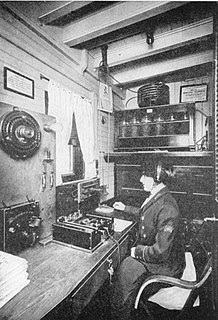
Graynella Packer was an American author and attorney, best known for being the first female radiotelegraph (wireless) operator to make overnight voyages on an ocean-going vessel, when she served aboard the steamship Mohawk along the Atlantic seaboard from November 1910 to April 1911. She later authored a training manual for Morse code telegraphy, and became a lawyer qualified to practice in four states and before the US Supreme Court.















